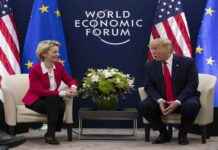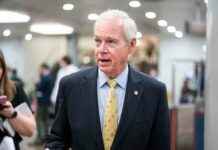The New York Stock Exchange saw traders in action on May 19, 2025. Things were looking pretty bleak as the U.S. debt and deficit situation was already bad and potentially getting even worse. Moody’s decided to downgrade the credit rating, leading to a selling frenzy in both stocks and bonds. It seemed like policymakers were only making matters worse by focusing on stimulating growth through President Trump’s spending bill.
Experts on Wall Street weren’t feeling too optimistic about the future. Kathy Jones from Charles Schwab mentioned that Moody’s downgrade simply highlighted what everyone already knew – things were headed in the wrong direction. The “big, beautiful bill” was only going to add to the debt and deficit issues the country was facing. With $36.2 trillion in debt, of which $28.9 trillion was held by the public, the U.S. was likely to see an increase in its debt load. Tax cuts without corresponding spending cuts would only exacerbate the budget deficit, which was on track to reach 7% of GDP.
Market reactions were quite severe, with Treasury yields spiking, especially in longer-term debt like the 10-year note and the 30-year bond. Investors were demanding higher yields to compensate for the increased risk associated with holding U.S. debt. The rising concerns about the fiscal situation, inflation from tariffs, and the Moody’s downgrade were all contributing to this trend. It was clear that the deficit levels were unsustainable in the long run, and without a concrete plan to address them, investor worries were likely to persist.
The potential passing of the 2017 tax cuts as part of the spending bill was expected to worsen the fiscal situation. Markets were betting on this outcome, anticipating higher interest rates, bond yields, and possibly inflation. The 30-year bond yield had already crossed the 5% mark, reaching levels not seen since 2023. Stocks were also feeling the pressure as higher interest rates could impact corporate profits, borrowing costs, and consumer spending. The global economy was also experiencing rising bond yields, with concerns about fiscal stability spreading to other countries like Japan.
As the situation continued to unfold, it was becoming apparent that the global economy was entering a new phase with permanently higher interest rates, slower economic growth, and a more complex market environment. Mitch Goldberg from ClientFirst Strategy likened the current scenario to a dam breaking, with too many holes to plug. The cost of debt financing was on the rise, hinting at a period of austerity similar to what the European Union had faced a decade ago. Equity investors were bracing themselves for more significant fluctuations in the stock market, signaling a shift towards a new global economic reality.













